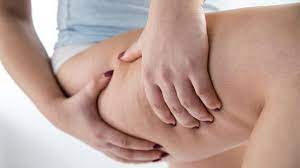
The Role of Compression Therapy in Lipedema Care
Lipedema, a condition often misunderstood and underdiagnosed, affects an estimated 11% of women globally. It’s characterized by abnormal fat deposits that predominantly accumulate in the lower body, leading to pain, swelling, and mobility challenges. While Lipedema has no cure, compression therapy has emerged as a key player in managing its symptoms effectively.
This article explores the role of compression therapy in lipedema care, highlighting its benefits and why it’s increasingly becoming a standard recommendation.
Understanding Compression Therapy in Lipedema
Compression therapy involves the use of garments, wraps, or devices that apply controlled pressure to affected areas of the body. For those living with lipedema, compression can offer relief from several persistent challenges:
1. Edema (Swelling) Management
Lipedema often leads to fluid retention and swelling in the legs and ankles. Compression helps prevent this by improving lymphatic and venous flow, reducing the buildup of excess fluids. Studies show that consistent use of compression garments can decrease swelling by up to 30% in individuals with fat disorders.
2. Pain Reduction
One of the hallmark symptoms of lipedema is tenderness or pain in affected areas. By applying pressure, compression therapy stabilizes the soft tissue and prevents fluid accumulation, alleviating pressure on nerve endings and providing much-needed relief.
3. Enhanced Mobility
Swelling and discomfort from lipedema often limit movement. Compression garments offer structural support, enabling improved mobility and reducing feelings of heaviness in the legs. For individuals with lipedema, this can be life-changing, as it allows them to engage in daily activities with greater ease.
Why Compression Therapy is Vital for Lipedema Care
The benefits of compression therapy aren’t just anecdotal. Data strongly supports its impact, with research indicating that 85% of individuals who use compression garments regularly report reduced pain and swelling. Furthermore, when combined with other treatments such as manual lymphatic drainage or exercise, compression therapy enhances overall outcomes by promoting better fluid management and tissue health.
What makes compression therapy particularly valuable is its non-invasive nature. Many individuals with lipedema face challenges when seeking surgical interventions or other intensive treatments. Compression therapy provides an accessible, lower-risk option to manage symptoms while improving quality of life.
Final Thoughts
Compression therapy is playing an increasingly significant role in lipedema care. By reducing swelling, alleviating pain, and supporting mobility, it empowers individuals to take control of their symptoms and lead more active lives. While it’s not a standalone solution, when used consistently and correctly, compression therapy can dramatically improve the day-to-day experiences of those living with lipedema.
Proudly powered by WordPress. Theme by Infigo Software.